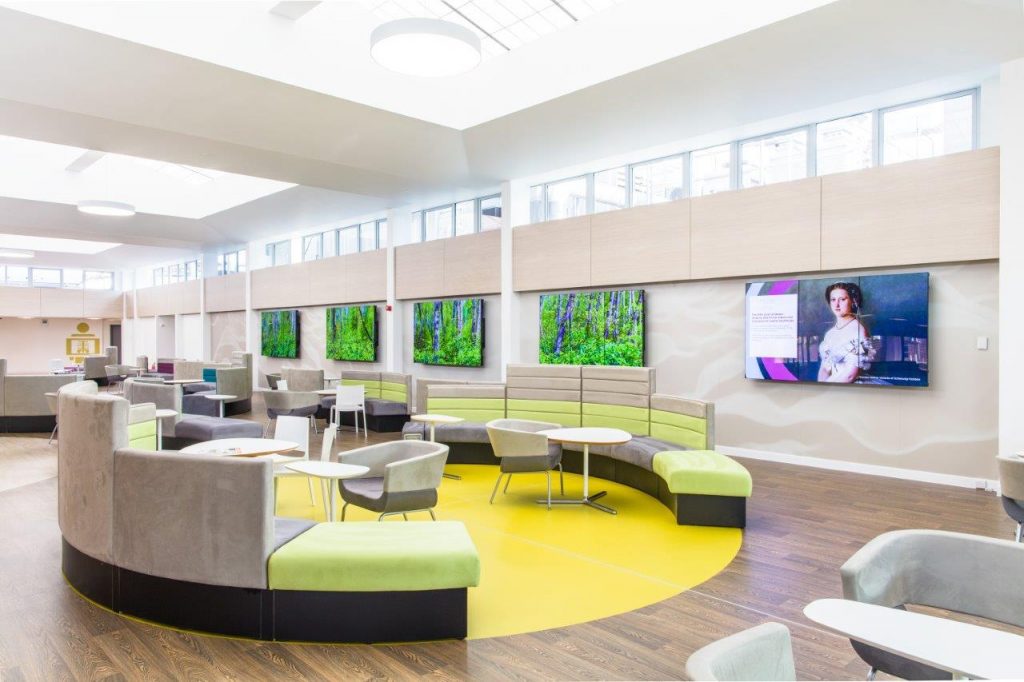Everwell


The ‘everyone in the same production building’ model didn’t work for us any longer as our content service grew…. With iconik and Backblaze, we finally have what feels like the modern, cloud-delivered production tool we’ve always wanted.
Loren Goldfarb, COO, Everwell
Everwell, a medical content company, initially deployed a large, on-site media asset management server and storage. This assumed users would be co-located, yet that proved not to be the case. To make do, remote content producers started to ship hard drives to editors. This raised concerns of drive vulnerability and took editors more time to find and re-edit content.
COO Loren Goldfarb sought a better solution. After consulting with a leading software integrator, Everwell adopted iconik’s media management software to capture content files’ asset metadata, and generate proxies. It then stored everything in a seamlessly integrated Backblaze B2 Cloud Storage account. Everwell also used a Backblaze Fireball rapid data ingest tool to quickly migrate raw footage into Backblaze B2.
The iconik and Backblaze B2 integration has allowed employees at Everwell to quickly and easily access content. Goldfarb no longer worries about running out of storage, managing servers, dealing with expensive maintenance contracts, or paying for staff to run it all. Instead, he can focus solely on business growth and success.

Everwell is a healthcare focused digital media brand dedicated to creating accurate, engaging video content that helps people lead healthier lives. Everwell’s continually growing content library of more than 600 videos is made available to license and is part of the Everwell+Plus digital wellness content service used by health care facilities and providers across North America.

Health journalist Robert J. Davis and former network television producer Loren Goldfarb saw a lucrative opportunity: millions of TV screens in medical office lobbies and waiting rooms could be a compelling delivery platform for well-produced health and wellness content. In place of cable news or daytime game shows, the team felt confident they could offer informative content tailored to individual healthcare practices in an enormous and ever-growing market.
To meet this need, they launched a medical content company called Everwell in 2007 and began production of a health video library. Hospitals, medical groups, and medical practitioners signed up and received a media player pre-loaded with all of Everwell’s videos along with software that allowed each practice to insert their own information.


As the number of subscribers and demand for their content grew, the company COO realized that his production workflow had to adapt quickly to keep up.
As the number of subscribers and demand for their content grew, Goldfarb, who had taken on the role of company COO, realized that his production workflow had to adapt quickly to keep up. The company initially went with what was then an industry standard workflow, including a large, on-site media asset management server and storage.
The system worked for several years, but as the amount of raw footage grew and the file sizes increased (720p to 1080p to 4K), the strain on its asset management system began to show. Everwell’s content producers and editors needed to work faster, and increasingly from remote locations. Having to travel to the main production office to load content into the media asset manager became a critical bottleneck. And yet this was the team’s painful reality, because traditional, site-focused media asset management systems assume that all users are in the same location, and trying to give access to remote users with VPNs and firewall navigation proved frustrating and time-consuming.
Savvy and results-oriented as they were, remotely located producers resorted to shipping hard drives directly to editors, bypassing the asset manager system altogether. Raw content was extremely vulnerable while being shipped around on hard drives, and finding and re-editing fresh content from original source files was not practical. Content was becoming disorganized and hard to find.

Goldfarb realized that traditional broadcast, site-focused asset management solutions weren’t working for his organization. He also dismissed as impractical suggestions that Everwell install servers and storage at every remote production site. Instead, he believed the company would be best off breaking away from having to manage on-site storage systems and the continuous maintenance, upgrade, and replace cycles.
What he really wanted was to deliver a modern, collaborative solution that kept his productions moving smoothly and could adapt on the fly to new producers and editors, keep his content organized and protected, and above all, let his team focus on creating great content.
With these requirements in mind, Goldfarb began reviewing available asset management solutions, discarding one after another until an integrator proposed a combination of iconik’s media management solution and Backblaze’s B2 Cloud Storage.
Goldfarb learned that iconik offered an entirely new and modern approach to delivering asset management and production collaboration as an on-demand service. Instead of on-site servers and specialized software installations, Everwell’s new asset management service would use powerful cloud application delivery technologies available to all of his users instantly, wherever they had access to the internet. As a cloud-delivered service, iconik would give Everwell entirely new capabilities like cloud-based proxy rendering that could scale up to any need instantly, and access to powerful artificial intelligence tools to help tag, enrich, and search across his entire store of content.
Now, even remote producers could ingest content into iconik. As soon as content was added, iconik’s cloud-based compute resources would then capture the files' asset metadata, generate proxies, then seamlessly store the content in Everwell’s Backblaze B2 Cloud Storage account. Everyone on the team would have immediate access and the production process would get much simpler and far more efficient.
Goldfarb found Backblaze B2 to be the ideal storage solution to protect his valuable content. He appreciated that it was perfectly integrated with iconik. Backblaze’s combination of extremely high file integrity, instant availability, and dramatically lower cost than other leading cloud storage solutions meant that he no longer had to manage production asset archive storage—he could move entirely to the cloud.
This was the seamless, real-time solution that he had envisioned, with all of the benefits of a truly cloud-delivered, and cloud-enabled solution. Both iconik and Backblaze services could be started up in minutes and the pricing was affordable and transparent. He would never pay for services or storage he didn’t use. He could also phase out his on-site servers.
Having found the way to meet his team’s needs and deliver his technology pivot to his production team, Goldfarb had a new challenge: How could he migrate the enormous library of raw material and existing asset metadata without adversely impacting production? He wanted no downtime or other material disruption.


What he really wanted was to deliver a modern, collaborative solution that kept his productions moving smoothly and could adapt on the fly to new producers and editors, keep his content organized and protected, and above all, let his team focus on creating great content.
To jump start the new project, Everwell signed up for the Backblaze Fireball Rapid Ingest Service. The Fireball allows customers to easily migrate large amounts of content directly into a Backblaze B2 account. This has proven to be a much quicker way to migrate data in comparison to using a bandwidth-constrained internet connection. As part of the service, Backblaze sent Everwell a 70TB storage system that Goldfarb then connected to his local network and began copying his content to it without the constraint of his internet bandwidth.
Meanwhile, Goldfarb’s team exported the metadata records from his existing asset manager system, then with a simple script and iconik’s API, automatically created new placeholder records in iconik with all of that metadata.
The team then shipped the Fireball back to Backblaze, where all of the content was uploaded directly to Everwell’s Backblaze B2 account. iconik could then scan and identify the content and link it to the existing iconik records. Finally, iconik linked the source files in Backblaze B2 with the placeholder assets.
The result was an extremely fast migration of his existing content archive to his new cloud delivered system, ready for immediate production by team members spread across locations and time zones.


Both iconik and Backblaze services could be started up in minutes and the pricing was affordable and transparent. He would never pay for services or storage he didn’t use. He could also phase out his on-site servers.
With his new solution in place, Goldfarb’s production team now has extraordinary new capabilities and creative freedom. He is free to add new editors and producers on the fly, at a moment’s notice, and let them instantly ingest new content from any location and use a single interface to keep track of every project in his expanding asset library.
His team can use new AI-powered discovery tools to find content quickly and can always access the original raw source files to create new videos at any time. He has more time to add new features to his service and take on new productions and customers at any time.
Best of all, he is now free to grow Everwell’s production operations as fast as possible without having to worry about running out of storage, managing servers, expensive maintenance contracts, or paying for staff to run it all. Having made the cloud production pivot, Everwell is ready for whatever the future brings.

The Backblaze B2 Storage Cloud is purpose-built for ease. It offers always-hot, S3 compatible object storage that supports your workflows via third-party software integrations, APIs, CLI, and web UI. And it’s priced for easy affordability at rates a fraction of other cloud providers. Businesses in more than 175 countries use the platform to host content, build and run applications, manage media, back up and archive data, and protect and recover from ransomware.